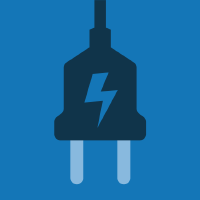Topic Menu
► Topic MenuTopic Editors

District Heating and Cooling Systems
Topic Information
Dear Colleagues,
In future energy systems, the high integration of different energy sectors and energy systems will be vital. Thus, district heating (DH) and district cooling (DC) networks will be as important as electricity grids. This has attracted special attention from researchers in order to further contribute to advances in state-of-the-art energy systems. This covers a wide range of research themes including novel designs for the fundamental structures of these distributed energy systems, proposals for increasing the cost or technical effectiveness of the existing systems, techno-economic analyses of case studies hosting DH and DC systems, using artificial intelligence or demand-side management for optimal operation of these systems, and so on and so forth.
This Topic aims at attracting cutting-edge research and review articles on DH and DC systems. Topics of interest include, but are and not limited to, the following:
- Novel concepts and designs in DH and DC systems;
- Innovative solutions for the improvement of the existing DH and DC designs;
- Integration of renewable-based co-generation or trigeneration systems to DH and DC systems;
- Passive and active performance enhancement techniques on DH and DC system components;
- The use of centralized or decentralized energy storage systems in DH and DC systems;
- Optimization methods for optimal operation or planning in DH and DC systems;
- Dynamic modeling and cost analysis of DH and DC systems;
- Technical and economic investigations of case studies for the implementation of DH and DC systems.
Prof. Dr. Ahmad Arabkoohsar
Dr. Meisam Sadi
Topic Editors
Keywords
- district heating
- district cooling
- sustainable thermal grids
- multi-carrier energy systems
- multi-generation
Participating Journals
| Journal Name | Impact Factor | CiteScore | Launched Year | First Decision (median) | APC | |
|---|---|---|---|---|---|---|

Energies
|
3.0 | 6.2 | 2008 | 17.5 Days | CHF 2600 | Submit |

Sustainability
|
3.3 | 6.8 | 2009 | 20 Days | CHF 2400 | Submit |

Processes
|
2.8 | 5.1 | 2013 | 14.4 Days | CHF 2400 | Submit |

Electricity
|
- | 4.8 | 2020 | 27.2 Days | CHF 1000 | Submit |

MDPI Topics is cooperating with Preprints.org and has built a direct connection between MDPI journals and Preprints.org. Authors are encouraged to enjoy the benefits by posting a preprint at Preprints.org prior to publication:
- Immediately share your ideas ahead of publication and establish your research priority;
- Protect your idea from being stolen with this time-stamped preprint article;
- Enhance the exposure and impact of your research;
- Receive feedback from your peers in advance;
- Have it indexed in Web of Science (Preprint Citation Index), Google Scholar, Crossref, SHARE, PrePubMed, Scilit and Europe PMC.


